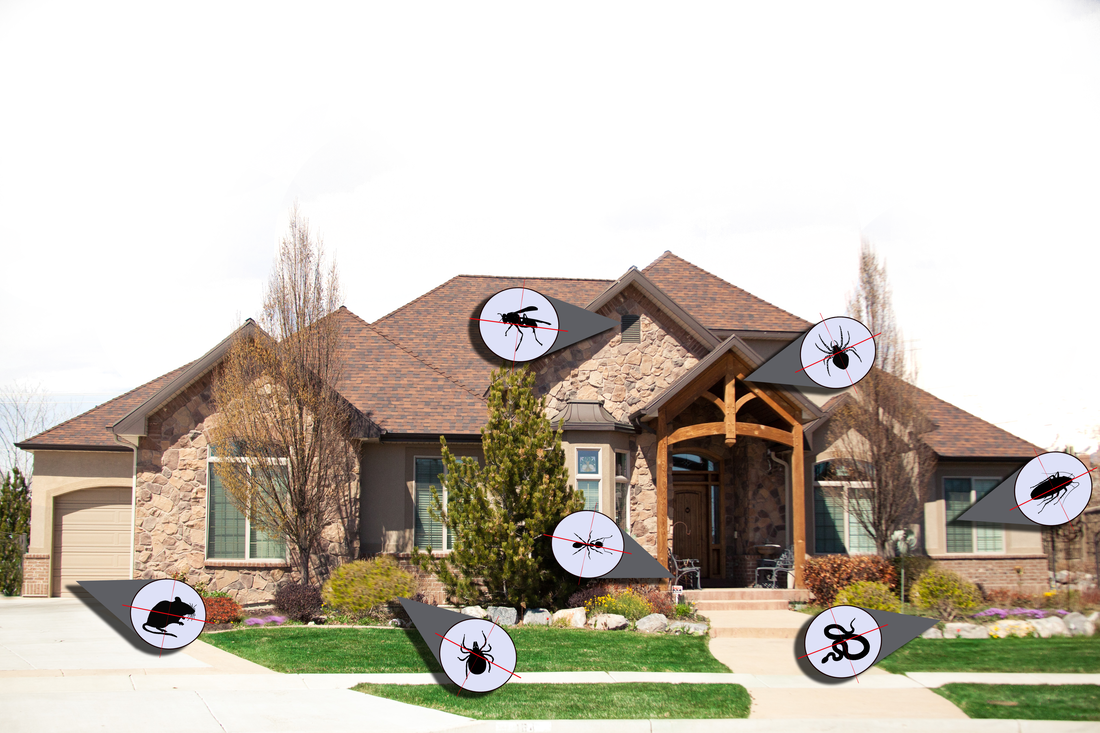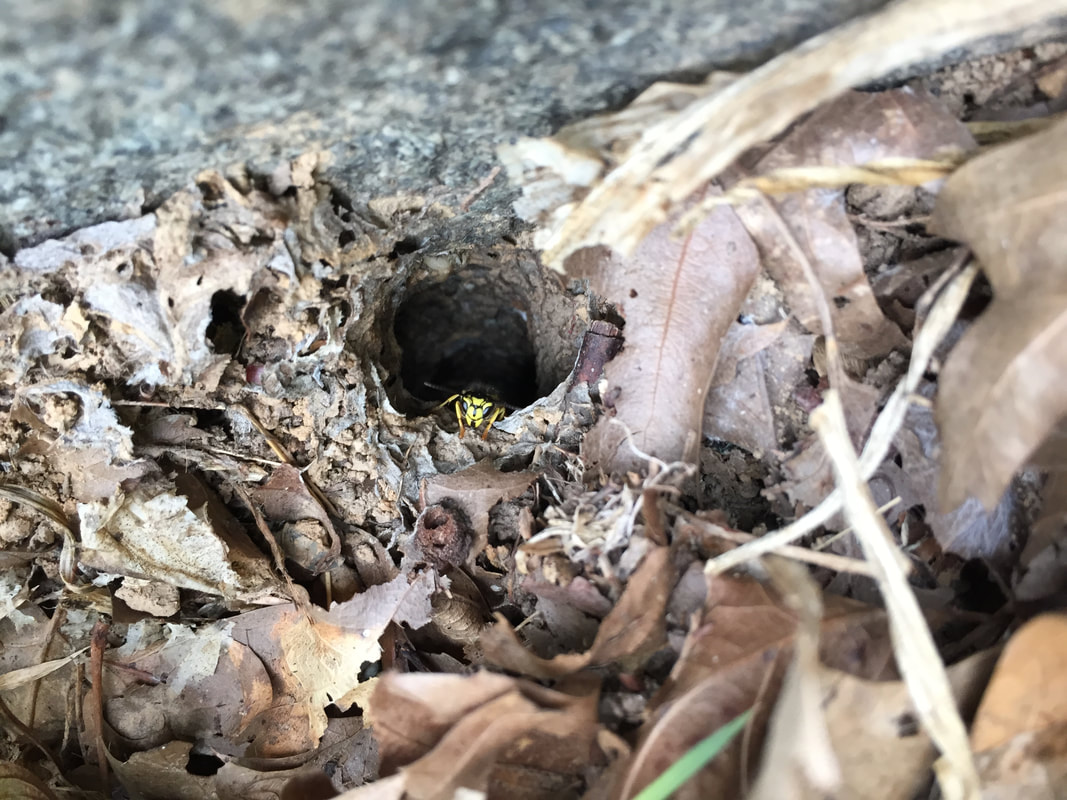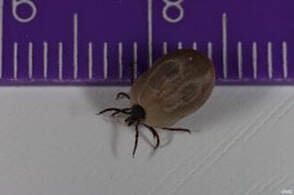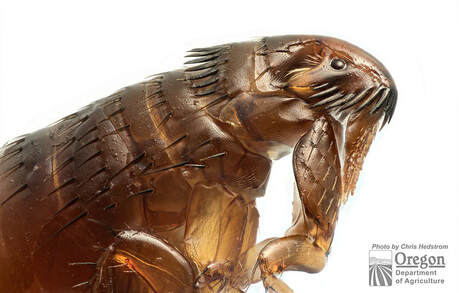|
Sometimes, pest issues are easily resolvable. Other times, you might wonder, “What the heck do I do about these ants?”, or something similar. Tough questions leading to prolonged pest problems might require the help of a professional pest management company to resolve. With so many choices out there, how do you choose the right company for the job? Read on to find out some important things to consider and questions to ask when you can’t manage pests alone and you need to hire a pro. Tips and TricksFirst of all, when you’re in the market for a pest control company, talk to several. It can be a good idea to get multiple (3-5) perspectives and multiple bids before making a decision. As you begin evaluating your options, keep the following tips in mind: 1. EXPERIENCE
4. SERVICE PROTECTION
 Do you understand the treatment plan? Did the technician discuss integrated pest management with you? A thorough company will assess your entire home for issues and likely go over a multi-pronged approach to solve your pest problems. Ideally, technicians will not rely solely on insecticides to solve complex pest issues. (Image Credit: Insight Pest, Image Source: Flickr) ConclusionsEach state will differ in terms of the rules and regulations are concerned for pest management licensing. If you have concerns, you can check with regulatory agencies in your state to be certain that the company you choose is properly licensed and in good standing with no pesticide application violations. A good company will make you feel at ease about a treatment plan, will make you feel heard and understood, and will have the expertise and experience needed to solve your pest problem. If you would like more information, here are a few articles that can help. Remember- these may have some state-specific components. Reach out to an extension specialist in your own state if you have additional questions and/or concerns!
2 Comments
IntroductionEnjoying your lawn and a relaxing party filled with food and outdoor fun is what the spring and summer seasons are all about. However, uninvited guests like ants, bees, and mosquitoes can really put a damper on the day. By following a few simple steps, it is easy to make your next outdoor event much less buggy. Keep reading for some tips to prevent unwanted guests from ruining your next BBQ or outdoor party! 1. Cover or Hide the FoodSome insects, like mosquitoes, are attracted to humans and human odors. However, most pests that ruin outdoor parties are attracted to foods that people eat. Flies, yellowjackets, ants, bees, and other bugs enjoy many of the same fatty and sugary foods that we do. Meats, sugary drinks, fruits, and other goodies should be served inside whenever possible. If you are serving food indoors, make sure that pest entry is prevented by keeping screens, doors, and windows closed. Screens should be inspected for rips or tears prior to gatherings and repaired whenever necessary. Gaps around doors and windows should be sealed. If food is served outdoors, it should be covered appropriately, or, food should be stored in a container/cooler. Bugs will crawl into and hide in bottles and cans, so plastic or glass cups should be used if possible. Plastic is less susceptible to breaking and other accidents, too. 2. Tidy UpEven crumbs are enough to attract most insects to an area. Leftovers, spilled foods, and other free meals for pests should be cleaned up as soon as possible. Utensils and dishes should be brought indoors or disposed of as quickly as possible after use. Food remnants should be rinsed or removed prior to disposal. Garbage bags should be used to contain trash. Any liquids should be emptied and the cans/bottles rinsed before being bagged. This will prevent puddling at the bottom of receptacles that can attract ants and flies even after the party has ended. Make sure all garbage bags are sealed tightly before they are placed in trashcans. The lids on trashcans should close tightly to discourage entry by racoons, rats, mice, and other vermin. If you have pets, do not forget to scoop up pet waste, which can attract ants and flies.  An overflowing trash can with loose garbage is asking for trouble. Make sure to keep garbage tightly sealed in garbage bags, rinse containers holding liquid prior to disposal, and make sure the lid of the trashcan closes tightly to eliminate free meals for pests. (Image Credit: theblowup, Image Source: Unsplash) 3. Reduce FragrancesFragrant flowers or candles mimicking flowers can attract stinging pests like wasps. Try to reduce the amount of floral scent at your next party to discourage wasp presence. This is especially important if children or adults with allergies (to stinging pests) are attending the party. 4. Reduce Sources of Standing WaterMosquitoes are one of the most annoying pests to show up uninvited to a party. You can reduce the number of mosquitoes you see all summer long by removing or draining sources of water in the yard that could serve as a breeding ground for these pests. This may include kiddie pools, birdbaths, planters, gutters, etc. These water sources should be monitored and drained once per week to achieve optimal results prior to the day of your event. 5. Wear Insect RepellentWearing insect repellent on exposed skin can reduce the amount of interaction with biting pests like mosquitoes and ticks. The Environmental Protection Agency (EPA) has a tool for use that will help you find the repellent that will work best for you depending on the pests you need to repel. Also, keep in mind that citronella candles and other gimmicky mosquito prevention products are not effective. 6. Prepare and Protect Your GrillInsects love to take up shelter in unused grills. Earwigs and other pests may make their homes in the cover, too. Before you fire up the grill for the first time, inspect inside for wasp or other nests. Scrape away old food and debris that can attract insects and rodents. Remove and dry out fabric covers that have been sitting for long periods of time. Insects will infest control knobs and tubes as well—inspect these before use. You can cover the gas lines with plastic or foil over the winter to prevent pest entry. Finally, before your first use, let the grill get hot for at least ten minutes to kill any existing freeloaders. ConclusionsA summer party is a great way to connect with friends and loved ones, but they can quickly turn sour when pests show up. When planning your next gathering, be sure to consider preparing the lawn and landscape to be less hospitable to unwanted animals. You might want to consider a professional inspection by a pest control company if you are dealing with severe pest pressure. They may be able to apply products that can control bugs for multiple weeks as well as suggest ways for you to pest-proof your yard based on the most annoying insects showing up in your area. Last week, we talked about the dangers that fleas and ticks pose to our family pets. Fleas and ticks live on our pets for at least some of their life cycle, which in some ways makes them easy to spot and control. But what happens when we send our pets outside and they are attacked by insects that we can’t necessarily see or prevent? This week, we’ll talk about how to reduce interactions between your pet and bothersome lawn and landscape pests. INTRODUCTIONIn our previous blog, we discussed the problems that parasitic pests cause for animals. Specifically, how fleas and ticks can threaten a pet’s comfort, health, and (in extreme cases) life. However, we’ve all seen the “cute” photos of dogs that sniffed a bee a bit too close—resulting in a puffy snout and embarrassed pup. So, in this blog, we’re going to discuss the pests that live around your home (but not necessarily on your pet) that you may want to keep your pet away from, and how you can reduce their presence. Specifically, we will focus on mosquitoes, stinging wasps, and stinging ants. PESTS THAT AFFECT PETS1. MOSQUITOES Pets are not immune to mosquito bites. In fact, while many mosquitoes prefer mammals, there are definitely species that will attack birds, reptiles, and amphibians. In addition to itching and discomfort, mosquito bites can transmit some not-so-nice parasites and pathogens to pets, too. One of the most devastating is the transmission of heartworms from mosquitoes to pets, mainly dogs. These parasites block the flow of blood to major organs and are typically not detected until the disease is very progressed. At this stage, treatment is difficult and the animal can die. For cats that are infected, lung failure can occur due to inflammation triggered by the presence of heartworm larvae. In addition to heartworm disease, mosquitoes may transmit eastern equine encephalitis (EEE) and West Nile virus (WNV) to pets, but infection rarely causes symptoms or problems for small animals like cats and dogs (unlike horses). With the range of disease-transmitting mosquitoes increasing and the risk of novel pathogens emerging, pet owners should prioritize protecting pets from current and future mosquito-transmitted diseases. Luckily, there are a number of solutions to do just that! Because heartworm disease is a major threat from mosquitoes, veterinarians recommend that animals take heartworm preventatives year-round. These products work by killing heartworm larvae as they enter the animal’s bloodstream. In addition, there are other oral and topical medications for fleas and ticks that are also labeled against mosquitoes. These products may repel mosquitoes before they are able to bite. Never use a mosquito repellent that is labeled for humans on a pet. These products may cause unexpected side effects. In addition to topical and oral medications, there are steps you can take to prevent mosquitoes from breeding and simply existing around your home, which would of course prevent pet contact with these critters.
3. FIRE ANTS Veterinarians treat small animals and pets more often for fire ant stings than any other animal. Fire ants will often sting the hairless areas of an animal, such as the eyes, ears, belly, and muzzle—all of which are very sensitive areas. Fire ant stings are painful, can become infected, and some pets may have serious allergic reactions to their stings. Because mounds can house thousands of fast-moving, aggressive stinging ants, the animal may suffer thousands of injuries before a human can intervene. Like wasps and hornets, protecting your pets from fire ant stings begins with protecting your lawn from fire ants. If your pet is being actively stung by fire ants, brush them off as quickly as possible while avoiding getting any ants on yourself. Do not use water—it does not phase them, and ants can simply hang out and continue stinging. When you are applying pesticides for fire ant management, you must keep pets away from the area for the length of time specified on the product label. Be especially sure to keep pets away from ant baits, which our furry friends will readily consume. CONCLUSIONS.Biting and stinging pests can cause pain and discomfort for pets. In addition, bites and stings from insects like mosquitoes, wasps, and ants pose significant risks to animal health. Remember to talk to a veterinarian for the best options to protect your pet from mosquito bites. Landscapers and pest management professionals can help you create a pest-free yard. Finally, entomologists are a great resource for pest management in the environment too! Like many pests, bites and stings are an issue best solved with an ounce of prevention rather than a pound of cure. For many of us, pets are an integral part of the family. We often give them the same love, affection, and attention that we give to a human family member. They typically sleep, play, eat, and travel with us—engaging in many of the same activities that humans do. Unfortunately, that means that they are susceptible to many of the dangers that we are, and that includes attack by insect pests. In this week’s blog we discuss insect/arachnid threats to our furry friends and how to keep our pets happy, healthy, and pest-free. PESTS THAT AFFECT PETS1. TICKS Ticks are exceptionally dangerous for pets, especially those that spend the bulk of their time outdoors. Because they attach to animals and feed on blood for multiple days, they are exceptionally good at transferring microbes into the bloodstream of their host. Deer ticks are probably the bad guys you’ve heard of most—as they can transmit Lyme disease. In dogs, this could manifest in lameness, joint swelling, fatigue, and loss of appetite. In severe cases, there are serious kidney complications associated with Lyme disease in dogs, too. Lyme disease is caused by an infection with a bacterium, Borrelia burgdorferi that is spread to people and animals through tick bites. Animals typically show signs of chronic infection 2-5 months after infection. In addition to Lyme disease, dogs are also susceptible to an array of other diseases transmitted by ticks, including canine ehrlichiosis, anaplasma, Rocky Mountain spotted fever (RMSF), babesiosis, bartonella, and hepatozoonosis. Some of these are debilitating and when they are, they are often fatal. Ticks not only affect dogs, but they impact the health of cats, too. Ticks can transmit multiple diseases to cats including cyauxzoonosis, tularemia, anaplasmosis, and of course, Lyme disease. Infection with pathogens that cause these diseases can cause secondary infections, anemia, and tick paralysis—which can be life threatening. To prevent ticks from latching on to your furry friend(s), take a two-pronged approach that includes speaking with a veterinarian and modifying the lawn and landscape to be less tick-friendly. First and foremost, take your pet in for a check-up with your primary veterinarian and discuss a tick prevention product that works best for you. Although over-the-counter tick prevention is available and can be efficacious, your vet will know which of these are appropriate for your pet based on their medical history. Additionally, there are multiple product forms available and making an informed choice can feel overwhelming. Most oral and topical products require you to reapply once a month, or once every few months. Make sure to log these dates in your calendar so you do not forget! Missing an application gives ticks a window to attack your unprotected pet.
For more information on tick distribution, life cycle, and habits, see this handy website from the Centers for Disease Control and Prevention. 2. FLEAS Fleas are small, blood sucking insects that have plagued animals since, basically, the dawn of time. It is unlikely that an animal will contract a disease from flea bites, but there are certainly a number of health risks that fleas pose to pets, and people too. Fleas can transmit both plague and murine typhus (although this is rare). More commonly, fleas cause parasitic dermatitis. This is a problem that arises when pets are allergic to flea saliva; flea-related dermatitis can cause inflammation, dramatic hair loss, and infection. Certain tapeworms are passed to animals from fleas, too. Finally, flea infestations can lead to cat scratch fever—an infection caused by the bacterium Bartonella henselae (see link above). Unlike ticks (excluding the brown dog tick) fleas can survive and reproduce in the indoor environment. This means that an additional approach is needed for flea management when we compare flea infestations to tick infestations. In addition to treatment of the animal and management of the lawn, steps must be taken indoors as well to eradicate fleas. If you see your pet itching more than normal, see small “pepper flakes” (flea poop) on your pet’s skin or in the environment, and notice small, jumping insects on your pet—it is time to take action. Ideally, you can stop a flea problem before it starts. This involves taking the steps we outlined above in the tick section. Talk to your veterinarian about flea prevention products, which luckily tend to treat prevent ticks, too! Once that has been taken care of, you can use a flea comb to remove fleas that are present, or, as a preventative tool to make sure no fleas are around. If your pet has an active flea problem, wash them with a medicated shampoo (your vet can recommend a suitable product). These shampoos are drying to your pet’s skin and should not be used for long-term flea treatment or prevention. Because fleas thrive in environments that pets frequent, it might be a good idea to hire a pest management professional to conduct a lawn and perimeter pesticide treatment. This is not always necessary, but may be prudent when fleas have been an ongoing problem. They are also able to treat the indoor environment to reduce the number of fleas you see while you are engaging in other treatment methods. Fleas are an issue that cannot be solved with pesticides alone, though. Eggs and larvae (juvenile fleas) must also be addressed in order to prevent the cycle from starting again. Be sure to launder infested items and vacuum the home frequently. These practices will not only remove fleas, but they will also remove flea droppings from the environment, which juveniles need to feed on to survive. Finally, avoid using over-the-counter flea bombs indoors. Pesticide does not often get to the areas where fleas are harboring and fleas are becoming resistant to the active ingredients used in many of these products. CONCLUSIONSFleas and ticks are not a problem you should ignore. Flea and tick bites pose significant risks to animal health in addition to making pets uncomfortable due to scratching and allergic reactions that can follow. It is important to place your pet on a preventative treatment year-round to keep fleas and tick populations from building up in and around the home where they may start biting people, too. Entomologists are a great resource for pest management in the environment, but for fleas and ticks—make sure you discuss a prevention plan with your veterinarian, too. Do not be fooled by cheap products that make bold claims. There is no miracle product or solution and treatment takes patience, especially for fleas. However, the comfort your best friends enjoy once they are pest-free makes it all worth it, right? Be on the lookout for our next piece which will cover mosquitoes and stinging pests! |
Bug Lessons BlogWelcome science communicators and bug nerds!
Interested in being a guest blogger?
Archives
November 2023
Categories
All
|





